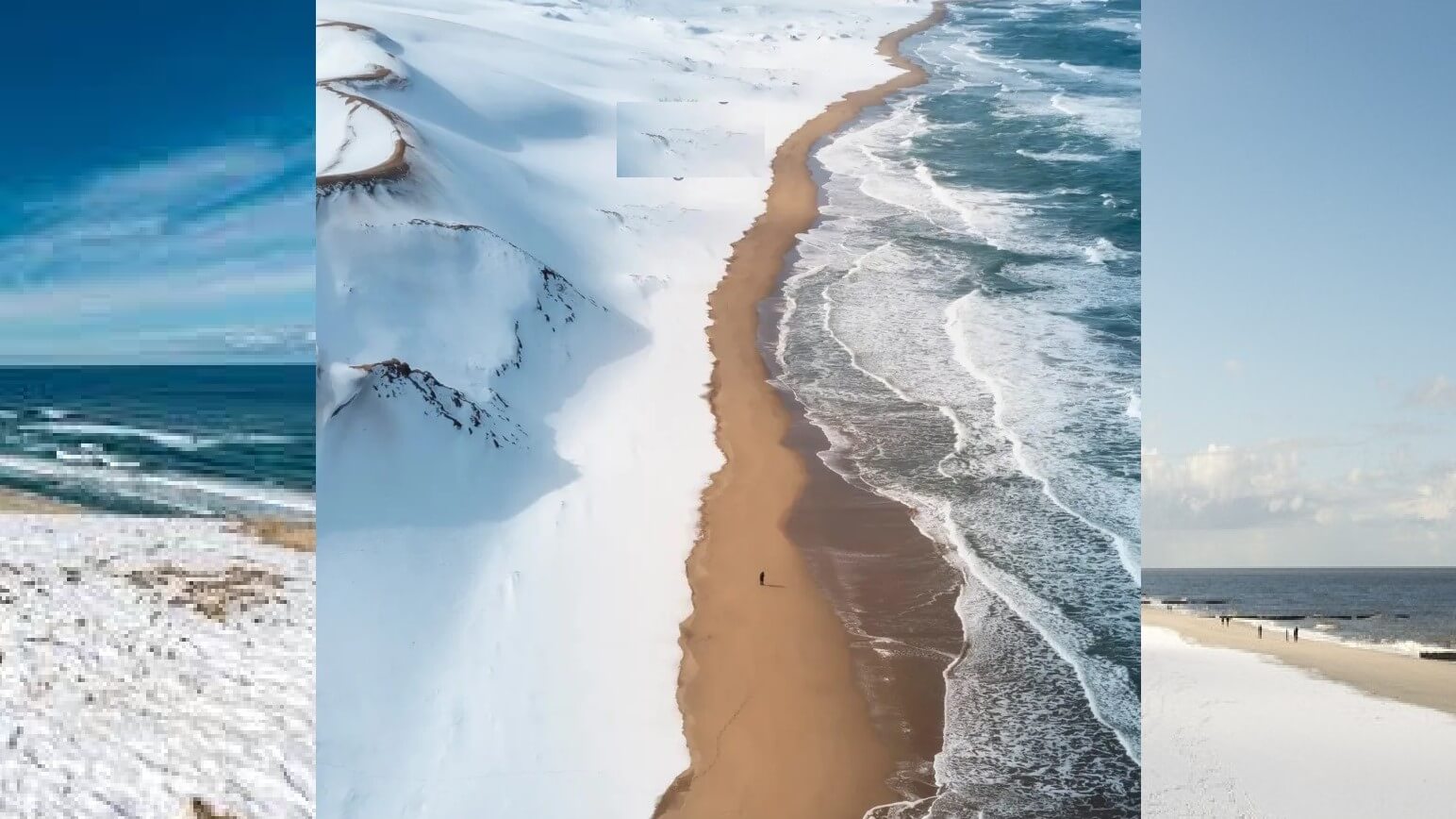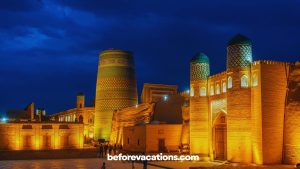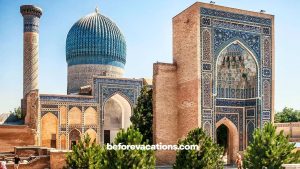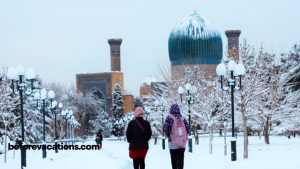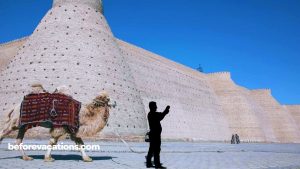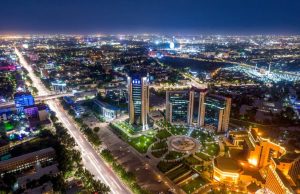A pristine blanket of white stretches down to the water’s edge, where gentle waves from a steel-grey sea lap against a shoreline dusted with snow. This isn’t a scene from a fantasy novel; it’s a very real and breathtaking spectacle that can be found in Japan’s northernmost prefecture. Experiencing a Hokkaido beach where snow, sand, and sea meet is a profound encounter with nature’s artistry. It is a moment of stark contrast and serene beauty, a quiet counterpoint to the island’s more famous ski slopes and ice festivals. For travelers seeking a unique winter memory, this phenomenon offers an unforgettable visual. This guide will reveal where to find these spectacular coastal scenes, what to expect, and how to make the most of this truly unique adventure in Hokkaido.
The Ethereal Phenomenon of a Snow Beach
The meeting of snow, sand, and sea is not a common sight in most parts of the world. In Hokkaido, however, the geographical and climatic conditions create the perfect stage for this visual marvel. The island’s northern location means it experiences some of the heaviest snowfall in Japan. Its coastal areas are exposed to cold winds and the Siberian air masses that sweep across the Sea of Japan. When the temperature drops low enough, often below freezing, snow that falls on the land remains. It blankets the beaches and coats the coastline. This creates a striking juxtaposition of the soft, white snow and the dark, churning ocean. The scene’s beauty lies in this contrast. It is a quiet, powerful display of nature’s raw elements interacting in one place. The absence of crowds often adds to the sense of discovery. This allows for a peaceful, solitary experience with the landscape.

Where to Find a Hokkaido Beach Where Snow, Sand, and Sea Meet
While this phenomenon can occur along much of Hokkaido’s coastline during a cold, snowy winter, some locations are particularly well-known for their stunning visuals and accessibility. These spots provide the perfect vantage points and photographic opportunities. They are ideal for anyone hoping to witness this unique meeting of elements.
Otaru: A Historic Port with a Snowy Shoreline
The historic port city of Otaru, famous for its glassworks and charming canal, offers an accessible and beautiful spot to witness this spectacle. Just a short drive or train ride from Sapporo, the coastal areas of Otaru transform into a winter wonderland. The contrast between the snow-covered piers, frozen waves, and the active sea is mesmerizing. You can walk along the snow-dusted shoreline, taking in the sea spray mixed with snowflakes. The winter atmosphere here is enchanting. The city’s historic buildings, often blanketed in snow, create a picturesque backdrop. You can enjoy a quiet stroll on the beach before returning to the city for a warm bowl of ramen. This combination of natural beauty and urban convenience makes it a top choice for a day trip.
The Shiretoko Peninsula: Untamed Wilderness
For a more rugged and wild experience, the Shiretoko Peninsula offers breathtaking views of the meeting of snow and sea. This UNESCO World Heritage Site is renowned for its unspoiled nature and dramatic landscapes. During the winter, the snow-covered cliffs and mountains plunge directly into the ice-filled Sea of Okhotsk. This area is famous for its drift ice (ryuhyo). The snow-covered land meets not just the sea, but a sea covered in vast, floating sheets of ice. It creates an almost Arctic landscape. Here, the experience is not just visual but also tactile. You feel the immense power of nature. Observing this landscape from a boat tour or a snowshoeing trail along the coast is an unforgettable adventure. It’s an ideal spot for serious photographers and nature enthusiasts.
Shakotan Peninsula: Dramatic Cliffs and Coastal Views
The Shakotan Peninsula, known for its stunning turquoise waters in the summer, offers a dramatic coastal setting in the winter. Its jagged cliffs and rocky coastline provide a powerful contrast to the soft white snow. The Sea of Japan’s rough waves crash against the snow-covered rocks. The sight and sound of this are powerful and captivating. A drive along the snow-lined coastal roads offers breathtaking views. You’ll see snow-capped mountains in the distance and the snowy coastline up close. The relative remoteness of the Shakotan Peninsula means you’ll likely have the scenic views all to yourself. This peaceful solitude enhances the experience. It allows for a quiet appreciation of this beautiful winter phenomenon.
Combining the Experience with a Winter Hokkaido Itinerary
Finding a Hokkaido beach where snow, sand, and sea meet is a fantastic addition to any winter trip to the island. You can easily weave this specific experience into a broader itinerary that includes other famous winter activities. This ensures your trip is both unique and comprehensive.
The Best Time to Visit for Snow and Sea
The most reliable time to witness this phenomenon is during Hokkaido’s coldest and snowiest months. January and February are typically when snowfall is heaviest and temperatures are consistently below freezing. The scenery is at its most beautiful during this period. The air is crisp, and the landscapes are at their most pristine. A fresh layer of snow makes the beaches look untouched.
Practical Tips for a Winter Coastal Visit
- Dress Appropriately: Hokkaido winters are extremely cold. Wear multiple layers, thermal undergarments, a waterproof outer jacket, and sturdy, waterproof boots. Gloves, a warm hat, and a scarf are essential.
- Transportation: Many of these coastal areas are accessible by car. Be sure to rent a car with winter tires (studless) and consider all-wheel drive. Roads may be icy and snowy. Take caution. Local trains are also an option for cities like Otaru. The trains provide a scenic and safe alternative to driving in winter conditions.
- Timing Your Visit: For the best light and photography, plan your visit for the early morning or late afternoon. The low winter sun creates a soft, beautiful light that enhances the scene’s colors and textures.
- Safety First: The sea can be unpredictable in winter. Do not get too close to the water, especially during high tides or strong winds. The cold temperatures and icy surfaces can be dangerous. Stay on designated paths and view the scenery from a safe distance.
Other Winter Activities to Pair with Your Coastal Trip
- Skiing and Snowboarding: Hokkaido is a global mecca for winter sports. Resorts like Niseko, Rusutsu, and Kiroro offer legendary powder snow. A day on the slopes can be a thrilling contrast to a quiet coastal walk.
- Ice Festivals: Visit the Sapporo Snow Festival or the Lake Shikotsu Ice Festival. These events showcase incredible ice and snow sculptures and offer a festive atmosphere.
- Onsen (Hot Springs): End your day of cold-weather exploration with a relaxing soak in a traditional Japanese onsen. Hokkaido has numerous onsen towns, providing a perfect way to warm up and rejuvenate.
- Winter Cuisine: Sample Hokkaido’s hearty winter cuisine. Try a bowl of rich Sapporo miso ramen, a seafood hotpot, or a dish of fresh grilled lamb (Genghis Khan). These warming foods are an integral part of the Hokkaido winter experience.
Your Winter Coastal Adventure Awaits
Witnessing a Hokkaido beach where snow, sand, and sea meet is more than just a sightseeing opportunity; it’s a sensory and emotional experience. It reminds you of the immense power and quiet beauty of the natural world. This guide has provided you with the insights needed to find this breathtaking spectacle. It has also helped you to safely and confidently incorporate it into a larger winter adventure. From the serene shores of Otaru to the wild cliffs of Shiretoko, the unique combination of these elements promises a memory that will stand out among all your travels.
Ready to find your winter canvas? Start planning your trip to Hokkaido today and experience the serene magic of a beach where snow and sea become one!

